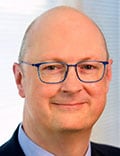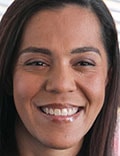The passage in 2010 of the Affordable Care Act delivered family medicine physicians and their colleagues in primary care a major victory. Thanks to 20-some years of lobbying, they wrested resident training from hospitals and into teaching health centers in rural and underserved urban communities.

Dr Sterling Ransone, Jr
A decade later, those teaching centers have proven they can maintain a grip on primary care graduates. But funding for these programs remains elusive, and lack of funding threatens to erode the hard-wrought gains, according to Sterling Ransone, Jr, MD, president of the American Academy of Family Physicians, a 128,000-member group based in Leawood, Kansas.
“If you’re going into a 3-year residency program, let’s say for family medicine, but Congress has said they would only pay for 2 years of it, you’re a little hesitant to go into that program not knowing if your third-year residency will be funded,” Ransone said.
The last time the program was reauthorized was with the enactment of the American Rescue Plan in 2021. That gave the program a 3-year extension, which was “fortunate,” Ransone said. “But I think we need to see about getting these programs permanently funded.”
Out of the Money
The first residents began their residencies in 2011, primarily in family medicine but also in internal medicine, pediatrics, geriatrics, psychiatry, and dentistry, according to Cristine Serrano, MBA, MPH, executive director of the American Association of Teaching Health Centers.
Before joining the Washington-based group in 2015, Serrano worked as an administrator for the Erie Family Health Center Program in Chicago, which was one of the first community teaching health centers in the United States.
John B. Waits, MD, CEO of Cahaba Medical Care, in Centreville, Alabama (population 2800), said one of the problems is that funding for training family physicians in underserved areas is funneled through hospitals, but primary care has become an ambulatory specialty.
“We were stuck with hospital-based funding for a specialty that is no longer primarily in the hospital,” Waits, program director of the Cahaba Family Medicine Residency of the University of Alabama, Birmingham, said. He added that hospitals decided on how to allocate funds for graduate medical education from the Centers for Medicare & Medicaid Services.
Ransone has practiced in Deltaville, Virginia (population 920), with his pediatrician wife, Karen Ransone, MD, for the past 27 years. He said teaching health centers contribute to reducing the shortage of primary care physicians in medically underserved areas.
He said the 3-year programs in teaching health centers are a part of the solution. In the past decade, 1148 primary care physicians have graduated from the programs ― 65% were family doctors, along with internists, ob-gyns, psychiatrists, and dentists. Most (55% to 70%) go into practice in underserved areas, according to the teaching health centers.
The Health Resources and Services Administration (HRSA) reported that 800 of these residents treated over 685,000 patients across all settings in the 2019–2020 academic year, “significantly improving access to care in rural and underserved areas.”
“Medical residents who do that kind of training tend to stay in underserved areas to help take care of those communities,” Ransone said.
Waits said family physicians typically spend 7 years in big cities affiliated with tertiary care hospitals as they go through medical school and residency.
Exposure to the bright lights and amenities of major cities ― culture, food, social life ― can frustrate efforts to attract them to towns in Alabama’s “Black Belt” and the Mississippi Delta, which have been subject to systemic racism and where almost 10 hospitals have closed.
First-year residents, who typically work 80 hours per weeks, earn about $59,000 per year, said Serrano, citing the Medscape Residents Salary & Debt Report 2022.
Waits said salaries come out of the $160,000 earmarked per resident annually for training programs.
But the combination of salaries plus benefits plus fees to the Accreditation Council for Graduate Medical Education often exceed $110,000 annually ― leaving roughly one third or less of the $160,000 to recruit and retain faculty for community programs, he said.
Eleni O’Donovan, MD, director of education at Unity Health Care in Washington, DC, said HRSA does not currently allow for regional variation in funding. As a result, programs that have higher expenses, such as salaries for residents in more expensive urban areas, might struggle more to remain viable.
“Some programs might need more funding and some might need less to remain accredited and viable, depending on location, but the current HRSA program has a fixed per resident amount that doesn’t take that into account,” O’Donovan said.

Dr Santina Wheat
In 2010, Santina Wheat, MD, MPH, began her residency in family medicine as part of the first class at Erie Family Health Centers in Chicago. The center is under the umbrella of the Northwestern McGaw Family Medicine Residency Program in Humboldt Park, a predominantly Latino and historically underserved neighborhood in the western part of the city.
Wheat now directs the program, which operates a dozen facilities, including a teaching health center.
She said the road to becoming a family physician is not easy. Wheat said she encountered bias against family medicine when she received her undergraduate training from specialists such as surgeons, who tried to steer her toward lucrative practices outside of family medicine and away from underserved areas.
“Not everyone thought that being a family physician was worth it. They told me I would not make enough money, but I was never the person that felt like they needed a $3 million house,” she said.
She grew up in an upper-middle-class area in Chicago and in the progressive suburb of Oak Park.
“I was raised in a family of teachers and was always taught to help others. That was part of my upbringing,” Wheat said. “I went into family medicine because I thought the best physician I could be was that person who was able to take care of everything for the patient in front of me. I wanted to be able to help them through all aspects of their lives.”
Pandemic Money a Boon, but Future Uncertain
Teaching health centers for primary care started as a pilot project at 11 locations nationally and had grown to 59 by 2014, Serrano said. The number swelled to 72 as of July 1, thanks to a cash infusion of $330 million over 3 years from the American Rescue Plan Act of 2021.
The AAFP continues to press for passage of the Doctors of Community Act (HR 3671, S. 1958), which would permanently extend funding and allow the creation of 100 new teaching health centers.
Many physician groups lobbied for the spending, including the Society of General Internal Medicine and the American College of Obstetricians and Gynecologists.
Ransone said teaching health centers cost $126 million a year, a tiny fraction of the $16 billion spent annually on graduate medical education. But the federal government doesn’t mandate the allocation of those funds. “The larger institutions tend to gravitate more towards surgery and the surgical subspecialties,” he said.
Serrano noted that teaching health centers constitute the only program accountable for the types of physicians they produce; by contrast, hospital-based programs can train any type of clinician.
“We are a tiny program, so any graduates are not even a drop in the bucket of this graduate medical education world,” she said.
O’Donovan said that although the number of graduates from the training centers is relatively small, they ease the shortage of family physicians.
“They’ll see millions and millions of patients over a lifetime, and I would say that impact as the program expands will be greater,” she said. “The majority will work in either rural or urban underserved areas.”
Serrano agreed. “It’s been proven that once a resident does their training in some kind of setting, they tend to stay within that setting,” she said. “If you’re taking the training and putting them in these rural communities and urban underserved communities, they’re going to stay in those communities.”
Howard Wolinsky is a Chicago-based medical journalist. You can read his stories about prostate cancer at TheActiveSurveillor.com.
For more news, follow Medscape on Facebook, Twitter, Instagram, and YouTube.
Source: Read Full Article